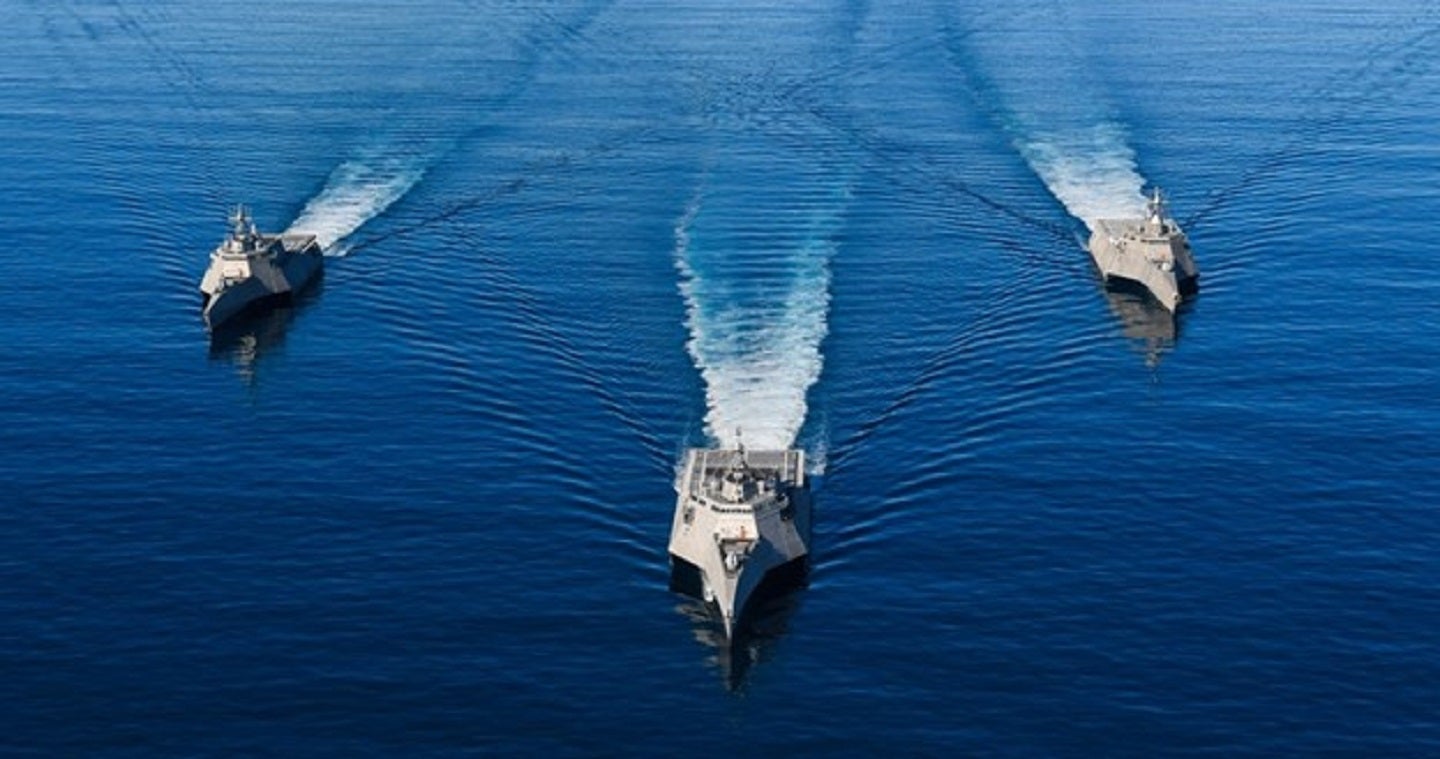
Following on from what seems to be constant activity to preserve the US Navy’s Littoral Combat Ship (LCS) fleet, the US Department of Defense (DoD) has modified its contract with Northrop Grumman for $46.7m to continue sustaining the ships’ mission modules.
The cost-plus-fixed-fee contract includes options which, if exercised, would bring the cumulative value of this modification to $161.2m; if all options are exercised, work will continue through to March 2026.
Already, this continued sustainment comes just after the DoD awarded its defence primes, Lockheed Martin and General Dynamics, multi-million-dollar contracts collectively worth $129m only last week.
LCSs are fast, manoeuvrable, networked surface combat ships that operate in coastal (littoral) waters to counter potential asymmetric threats, including mines, quiet diesel submarines and explosive devices transported on small, fast boats.
Of course, this role requires advanced technologies to counter this wide variety of threats, which is why the fleet’s Mission Modules (MM) are an important asset in the LCS arsenal.
In a Selected Acquisition Report from December 2021, the Department of the Navy explained that MMs are systems that provide specific capabilities to the LCS, including vehicles, sensors and weapons. The Navy add these to the fleet’s ‘Mission Package’ as technologies reach a level of maturity necessary for fielding.
The Navy will use LCS MMs to counter a range of surface and undersea warfare capabilities – for which GlobalData indicates substantial growth in these defence markets.
The global military Unmanned Maritime Vehicles (UMV) market is currently worth $1.3bn according to GlobalData. The company expects this value to grow at a compound annual growth rate of 9.52% over the next decade.
Likewise, GlobalData tells us that subsurface tech advancements the global Unmanned Underwater Vehicles (UUVs) market to be worth $750.5m in 2030, up from $525.1m in 2020. GlobalData expects the autonomous mine countermeasure (MCM) capability and distributed fleet structure initiatives undertaken by the US, China, Russia, the UK and France to drive growth.
Continued sustainment of MM LCS capabilities
The DoD gave no indication of the specific MMs that the contractor will sustain and/or develop onboard the LCS fleet. Although, in the past, Northrop Grumman has delivered three MM packages in 2013 – two for surface warfare missions and one for MCMs. Likewise, the DoD has awarded various other contracts to the prime on occasion, such as gun MM for both LCS variants in April 2018.
However, what we do know is that the Navy’s proposed FY2024 budget also proposes retiring 11 ships, including two relatively young LCSs, according to a Congressional Research Service report published on 5 September. Given the overwhelming decline of the fleet – which many have questioned may have been a mistake due to various engineering problems, particularly with the Freedom-class variant – it may be that the Navy decides to repurpose MMs to its existing fleet.



